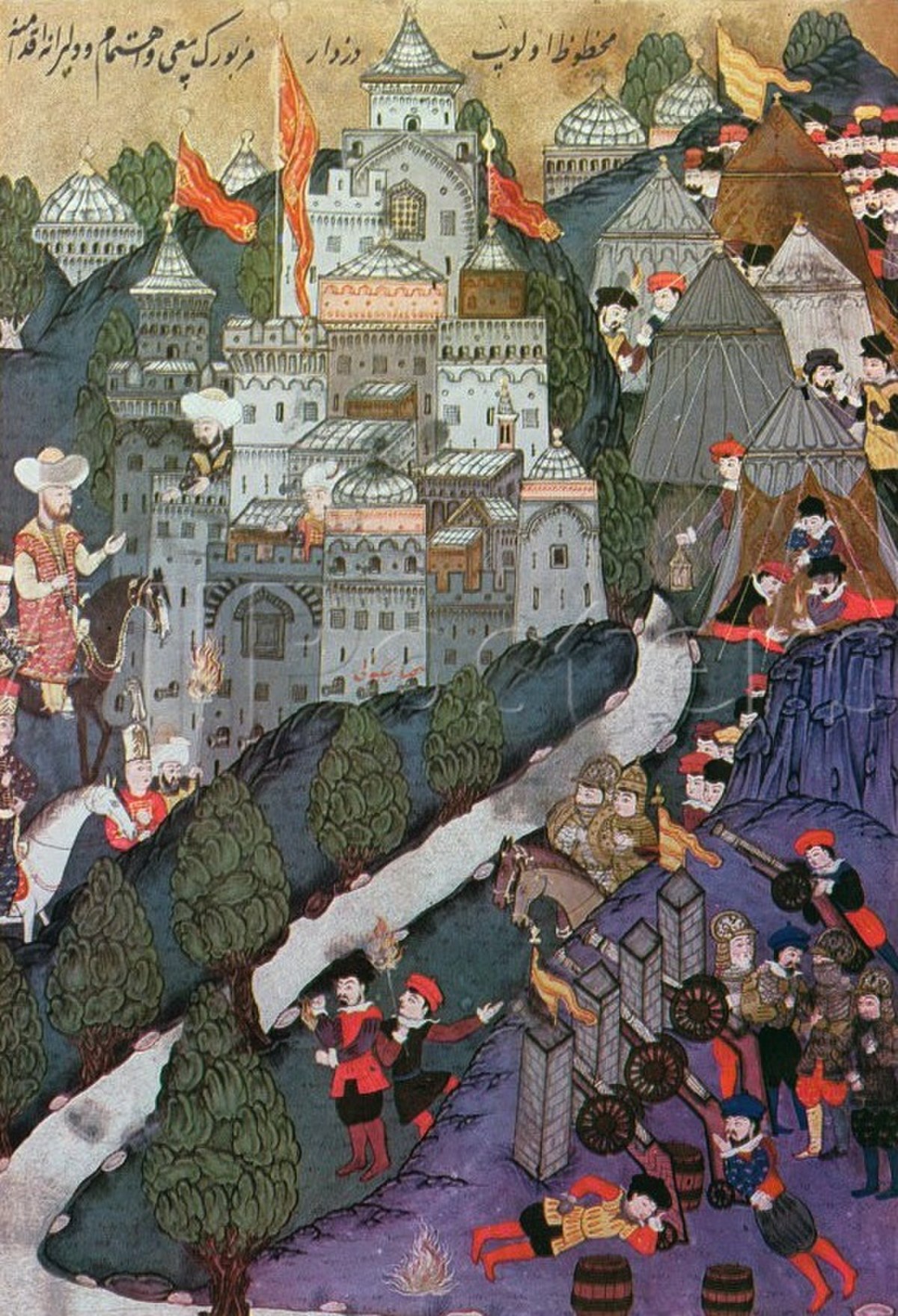
Ottoman Bulgaria
BulgariaIn 1323, the Ottomans captured Tarnovo, the capital of the Second Bulgarian Empire, after a three-month siege. In 1326, the Vidin Tsardom fell after the defeat of a Christian crusade at the Battle of Nicopolis. With this the Ottomans finally subjugated and occupied Bulgaria.[32] A Polish-Hungarian crusade commanded by Władysław III of Poland set out to free Bulgaria and the Balkans in 1444, but the Turks emerged victorious at the battle of Varna.
The new authorities dismantled Bulgarian institutions and merged the separate Bulgarian Church into the Ecumenical Patriarchate in Constantinople (although a small, autocephalous Bulgarian archbishopric of Ohrid survived until January 1767). Turkish authorities destroyed most of the medieval Bulgarian fortresses to prevent rebellions. Large towns and the areas where Ottoman power predominated remained severely depopulated until the 19th century.[33]
The Ottomans did not normally require the Christians to become Muslims. Nevertheless, there were many cases of forced individual or mass Islamization, especially in the Rhodopes. Bulgarians who converted to Islam, the Pomaks, retained Bulgarian language, dress and some customs compatible with Islam.[32]
The Ottoman system began declining by the 17th century and at the end of the 18th had all but collapsed. Central government weakened over the decades and this had allowed a number of local Ottoman holders of large estates to establish personal ascendancy over separate regions.[34] During the last two decades of the 18th and first decades of the 19th centuries the Balkan Peninsula dissolved into virtual anarchy.[32]
Bulgarian tradition calls this period the kurdjaliistvo: armed bands of Turks called kurdjalii plagued the area. In many regions, thousands of peasants fled from the countryside either to local towns or (more commonly) to the hills or forests; some even fled beyond the Danube to Moldova, Wallachia or southern Russia.[32] The decline of Ottoman authorities also allowed a gradual revival of Bulgarian culture, which became a key component in the ideology of national liberation.
Conditions gradually improved in certain areas in the 19th century. Some towns — such as Gabrovo, Tryavna, Karlovo, Koprivshtitsa, Lovech, Skopie — prospered. The Bulgarian peasants actually possessed their land, although it officially belonged to the sultan. The 19th century also brought improved communications, transportation and trade. The first factory in the Bulgarian lands opened in Sliven in 1834 and the first railway system started running (between Rousse and Varna) in 1865.
